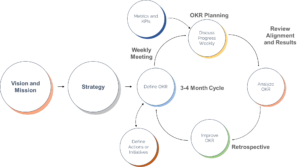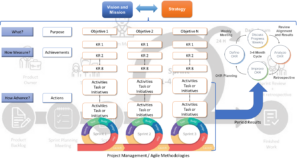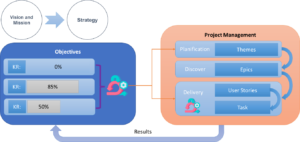Progressive PMOs are harnessing the power of Citizen Developers
A few of my colleagues raise eyebrows when I mention that I used to be a programmer back in the days, I am not talking about assembly language, but I could write a few things in Java and C++. Recently I picked up some new skills creating Power Apps, connecting data with Microsoft Dataverse, building Power BI Dashboards, automating processes with Power Automate, and building chatbots with Power Virtual Agents whilst preparing for Microsoft’s Power Platform Fundamentals certification. This is part of a growing trend of what has been termed Citizen Development.
Citizen development is an innovative approach to dealing with application development needs that a lot of Project Management Offices (PMOs) are now adopting. This innovative and inclusive approach to application development addresses the ever-increasing need for PMOs to keep abreast with technological change and the associated demand for user-friendly, hassle-free applications. Enterprise Technology departments are not always best to shoulder all the responsibilities related to digital transformation.
That’s where the inclusive idea of citizen development comes in as a broad-based and innovative solution. It enables project managers and implementers to develop applications on their own and in accordance with the most pressing PMO needs. Of course, they need to have advanced level of digital skills to use the low-code/no-code (LCNC) platforms, but with those skills taken for granted, almost any team member could take a stab at it.
Advertisement
[widget id=”custom_html-68″]
Citizen development has multiple benefits for the PMO and project management. By project management, I mean its agile and strategic version. Initially, this is far better for the current needs of success-oriented PMOs. Although traditional, waterfall types of project management would also gain. The benefits span many different sectors, whether it be public sector agencies, financial services, or non-governmental organizations. There is growing evidence that citizen development works, and that it works well for both organizations and individual employees. Let us examine what these benefits are and why they are important for the PMO and project management, irrespective of the field.
Cost-Effectiveness
This is an obvious one. With application development demands being extremely taxing on Enterprise Technology departments, LCNC platforms provide substantial cost-saving opportunities to PMOs. PMOs can thus channel the savings to other, under-resourced needs. Experts estimate that by using LCNC resources, applications can be developed 10 times faster when compared with traditional methods.
PMOs can also expect savings on the maintenance of the new applications. Maintenance and application support are normally separate line items in operational budgets. Higher-end products usually require significant inputs to avoid disruptions and breakdown. The maintenance and support cost are minimal for the applications developed by citizen developers. The overall cost to develop and maintain LCNC -based applications is estimated to be 74% lower than the cost of traditional development led by Enterprise Technology resources. In addition, LCNC platforms hosting present sizable cost reductions, as shown by the experience of Aioi Nissay Dowa Insurance. The company was able to save $1.4 million because of creative use of LCNC tools.
Breaking Down Silos
As citizen developers engage in software or application development, coordination with other business units of an organization becomes an absolute must. LCNC platforms do not require expert digital skills to use, but they need citizen developers to ensure that the end products are relevant to the PMO’s needs. From the perspective of effective PMO role, this is a great way of breaking down silos, which exist in all organizations. Improved teamwork and camaraderie are the important by-products of citizen development, which have long-term benefits. Citizen developers cannot go it alone, and it always takes a team effort to ensure that the end-product meets the critical needs of an organization. Importantly, this includes coordination of Enterprise Technology and non- Enterprise Technology resources too.
Agility
Citizen development also has the potential to make the PMO more agile. It expects non- Enterprise Technology resources to demonstrate adaptability and willingness to learn – two key attributes of an agile organization. From the perspective of the PMO, citizen development becomes a new and unconventional way of spurring continuous learning as an iterative and inclusive process.
Innovation and Creativity
By encouraging non-Enterprise Technology department resources to become software and application developers, PMOs can create a workspace conducive to creativity and innovation. As it happens, when people are given space and opportunity to punch above their weight, they usually outdo themselves by coming up with something extraordinary. Citizen development consequently becomes a great approach to egging people on to think outside the box. Agile organizations need to be innovative and creative. Equally, they need to be adaptive and committed to continuous learning.
Digitisation and Organizational Culture
The more employees get involved in citizen development, the better for the PMO and digital transformation. As PMOs take steps to adapt to the needs of digital transformation, citizen development becomes a timely and cost-effective method. It nurtures an organizational culture favourable for project resources and other non-Enterprise Technology resources to embrace change and make it work for themselves and the organization. It is this type of culture that becomes pivotal in weathering the storm of imminent changes and making the most of new opportunities for development.
Relevance and Flexibility
The involvement of PMO resources as citizen developers warrants the relevance of newly developed software and applications. No one could be more intrinsically motivated to ensure that they serve the purpose than the end-users themselves. I’m sure you can recall cases when even very expensive IT products turned out to be missing the mark. When developed in isolation from an organization’s core strategic goals and needs, they become underutilized. With less stringent requirements imposed; citizen developers have more flexibility to adjust as they go. As application development becomes faster, citizen development makes it easier to maintain the end products.
Summary
Citizen development has been winning over an increasing number of progressive PMOs and organizations. There is growing evidence that it leads to substantial cost-savings, encourages innovation, and makes organizations more agile. PMOs use it effectively to ease the workload of Enterprise Technology resources. Such departments are often understaffed or incapable of dealing with an ever-increasing list of requests and demands.
Citizen development makes a valuable contribution to an organizational culture that promotes creativity and initiative. In the current era of digital transformation, it is critical for agile organizations to create opportunities for their employees. This is to test and improve their digital skills. The experience of organizations that have embraced LCNC platforms for their non-Enterprise Technology resources to develop new applications shows that citizen development is definitely worth the effort.








